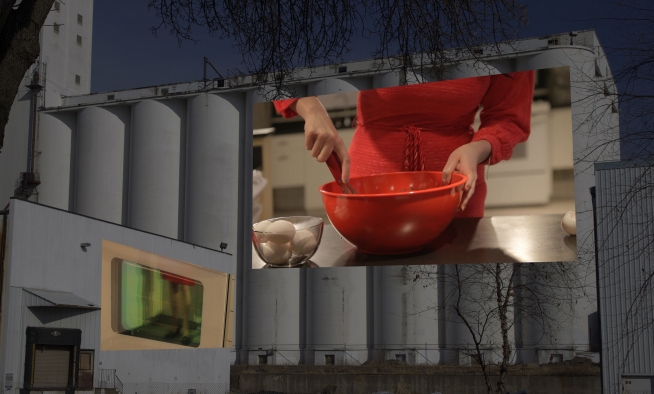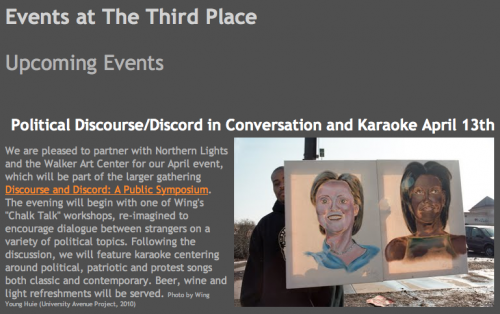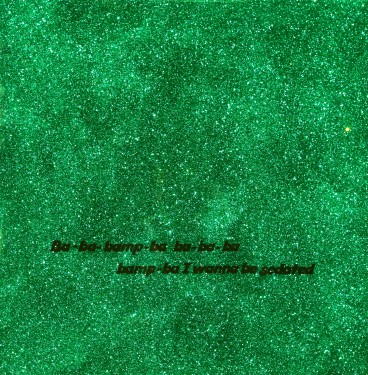One of the highlights of the symposium “Discourse and Discord: Architecture of Agonism from the Kitchen Table to the City Street” is the chance to experience some of my favorite artist-theorist-architect-programmer-activist friends engage in agonistic embrace on stage at the Walker. Here is the opening salvo (not to be confused with Di-Salvo).
How should I explain the idea of agonism to my neighbor across the street?
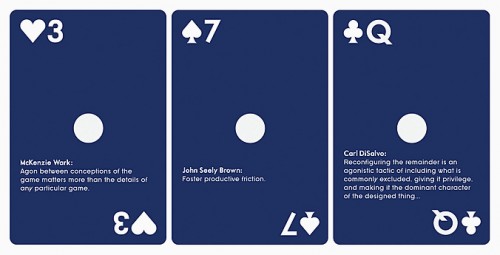
Pro+agonist: The Art of Opposition A new book and deck of cards by Marisa Jahn explores the productive possibilities of agonism, a relationship built on mutual incitement and struggle.
Warren Sack: “Agonism” is the ancient Greek word for a contest with a prize. In the sense we are using it, is a way of understanding life and politics as a game or contest.
Marisa Jahn: My neighbors do in fact ask me what agonism is. But then I like to throw it back on them. I say, “ok, let’s play a game. When I say agonism, you say…” I’ve gotten all sorts of answers. One person said, “Paradise Lost.” Lucifer wrestling the angels. A physiologist responded that the agonist is a contracting muscle; the antagonist is the muscle that returns the limb to its natural state. A techie person was reminded of the symbiotic relationship between the fig wasp and the sycamore tree. A musician likened agonism to noise. As in, harmony is control, order. Noise is the sum of sounds; it fluctuates between harmony and cacaphony. Noise is difference, polyphony, epistemological and political pluralism.
Mark Shepard: I don’t think you should explain agonism to your neighbor – better to enact it through engaging her – with empathy and respect – on an issue you disagree.
Carl Skelton: There is a variant of agonism, which most people think of as how open-source software happens: an idea gets proposed in an initial form to the widest possible group. Of the many who find fault with it, a small minority will actually propose an improvement, which is then subjected to the same process, except that the original proponent gets to weigh in as a critic. Anybody who cares enough to keep the idea moving owns it. Over time, competing variants and improvements are adopted and discarded by ad hoc groups which themselves persist, peter out or mutate over time.
Carl DiSalvo: Agonism is the truth that your neighbor already knows – legislation doesn’t *solve* anything, the conflicts continue regardless, it’s just the nature of politics.
How does agonism express itself in your practice as an artist?
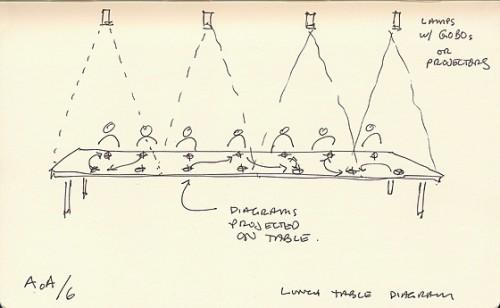
Mark Shepard, artist comp, structures for dischord
Marisa: If agonism merely describes a condition in the world, then expressing agonism through artwork in fact paints reality more aptly and with greater complexity. Agon makes things fun! Agonistic art practices “work” by coming in through the backdoor to solve problems and intrigue using a different kind of logic.
Carl D: My practice is about creating spaces for an agonistic pluralism to flourish, for creating spaces where we can participate in conflicting values and practices towards the composition of new social conditions and structures.
Mark: As an artist I maintain an agonistic relationship to the discipline of architecture. My work exploits the tensions between architecture and media art with respect to how space is conceived, constructed, organized and interpreted within technologically mediated environments.
Warren: Much of my work as an artist is concerned with politics and publics, and I consider what would it mean to make political metaphors material. For example, we talk about debates as though they are scored like boxing or wrestling contests, but of course they are not. What would happen if we devised a scoring system for debates?
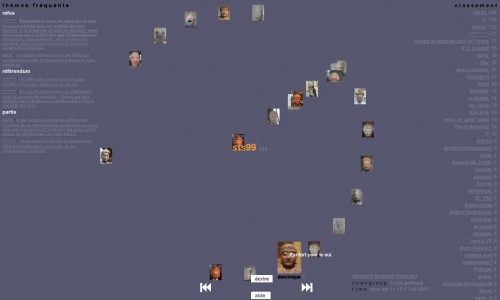
Warren Sack, Agonistics: A Language Game
Carl S: Nothing ever gets finished, but you never run out of room for improvement.
We’re clearly living in a fractious time. How can agonism help us?
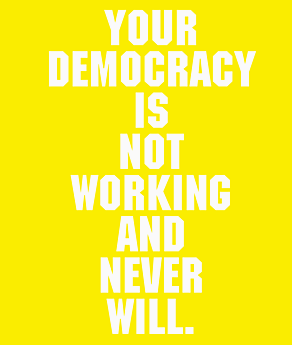
Courtesy Carl DiSalvo
Carl D: Like any theory, agonism is a tool to think with. So it gives us a way to understand what we mean when we use terms like democracy and politics. From this, we might begin not just “think about” but also “do” democracy differently.
Marisa: Paying attention to agonism helps us reframe how we see struggle. Instead of regarding it as a symptom of a bad or messy or contentious situation, we can instead see agonism as a symptom of an environment that is strong enough to withstand difference and adversity.
Warren: As many theorists have pointed out, our culture is increasingly “gamified.” People tend to think of many everyday actions as moves in a game. For instance, what does it mean “to make a move,” “to make a play,” “to play around,” “to call someone a loser”? If indeed, all the world’s a game and all the men and women merely players, then what is this game we are playing and how could it be otherwise?
Mark: One would hope that agonism offers a way to come to terms with extreme ideological differences – not resolving them, but at least making the debate more tolerable.
How do we foster a space for dissensus, critical dialogue, and debate?
Marisa: Promote and commit to diversity! This may mean doing the work to figure out how you are going to outreach to people from a different point of view or ilk, subjecting ourselves to uncomfortable situations; and building conditions to foster a sense of tolerance and difference. Listen to who’s not speaking and see why not; create a space where this differential is foregrounded. Understand that you can hold difference; understand when compromise sacrifices particular points of view and when compromise strengthens alliances.
What are you most looking forward to about the Discourse and Discord symposium?
Carl D: The opportunity to have these conversations in public, and to disagree about them.
Mark: The opportunity to encounter and test different ideas on agonism through the various formats planned.
Carl S: The chance to try a few things I’ve been working on, and to find out what might be possible in re-making Hennepin avenue, which seems to have a lot in common with a lot of other urban environments that need some love in North America and Europe.
Related
An Introduction to Agonism: Volume 1
An Introduction to Agonism: Volume 2
Discourse and Discord: Architecture of Agonism from the Kitchen Table to the City Street
Pro+agonist: The Art of Opposition (download)







